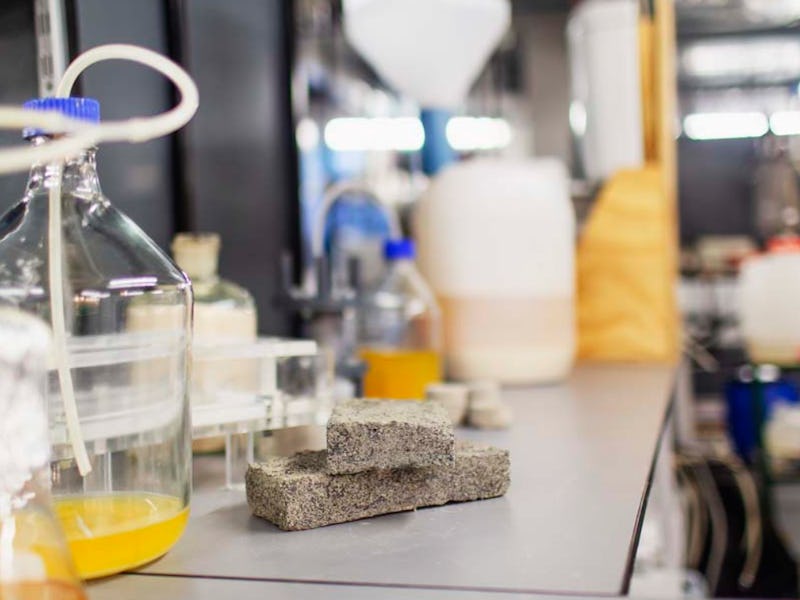Scientists Discover Bizarre Way to Build a House Out of Human Urine
"I'm grateful for the open-mindedness of people."

Of all the ambitious ideas that might deliver us from the wrath of the changing climate, turning human urine into liquid gold seems like a long shot. But according to scientists in South Africa, it turns out that the ubiquitous fluid contains a key ingredient that might help us in a variety of ways — including, oddly, a way to rebuild our cities once rising tides engulf coastal communities.
On Wednesday, a team at the University of Cape Town revealed that human urine can be manipulated into solid, brick-like forms they call “bio-bricks.” Unlike regular kiln-fired bricks, bio-bricks don’t require high heat, and producing them doesn’t spew out thousands of kilograms of greenhouse gases of carbon dioxide.
Water quality engineering lecturer Dyllon Randall, Ph.D., discovered urine’s potential after he began placing makeshift urinals around the university in an attempt to make fertilizer. The urinals contain builder’s lime, which reacts with the phosphorus in urine to produce fertilizer.
But even after the fertilizer was extracted, Randall soon realized that there was still some fluid left over. This, to use his words, was his “liquid gold.”
The bricks can be molded into any shape
In the leftovers was an important compound called urea, which is found naturally in human urine. Randall discovered that the urea solution could be used to make a brick by mixing it with loose sand colonized by species of bacteria that produce the enzyme urease.
The urease secreted by the bacteria breaks down the urea, and as a bonus, it produces the compound calcium carbonate. This hard white compound, which makes up the bulk of eggshells and the shells of shellfish, solidifies the sand particles together in the bricks.
The more time the bacteria are given to work their magic, the stronger the bricks grow, the team says, suggesting that several different types of building materials could be created with this method.
“No-one’s looked at it in terms of that entire cycle and the potential to recover multiple valuable products. The next question is how to do that in an optimised way so that profit can be created from urine,” Randall said.
This process, known as microbial carbonate precipitation, isn’t exactly new. Previous research has shown that there are plenty of microorganisms capable of carrying out the process. What appears to be new here is that the team has finally found a use for a liquid that exists in boundless supply. This is fortunate, as the BBC estimates that it would take roughly 100 trips to the bathroom to produce one of these bricks.
Randall's DIY urinal that collects the urine needed to create bio bricks
The urine bricks require no burning procedures, but the team will have to massively speed up their process before they can be a real alternative. Right now it takes between two and six days to grow depending on desired strength, and the team has yet to try actually building with them.
But for now, Randall is bowled over by the reception of his product.
“I’m grateful for the open-mindedness of people and the acceptance of such novel technologies,” Randall said in a video interview. “Who would have thought of recovering fertilizer from urine or making bio bricks using that same urine? That kind of interest gives me a lot of hope for the future in terms of attaining a sustainable future and environment.”
You May Also Like: Sustainable Lego Means Progress, Brick By Brick